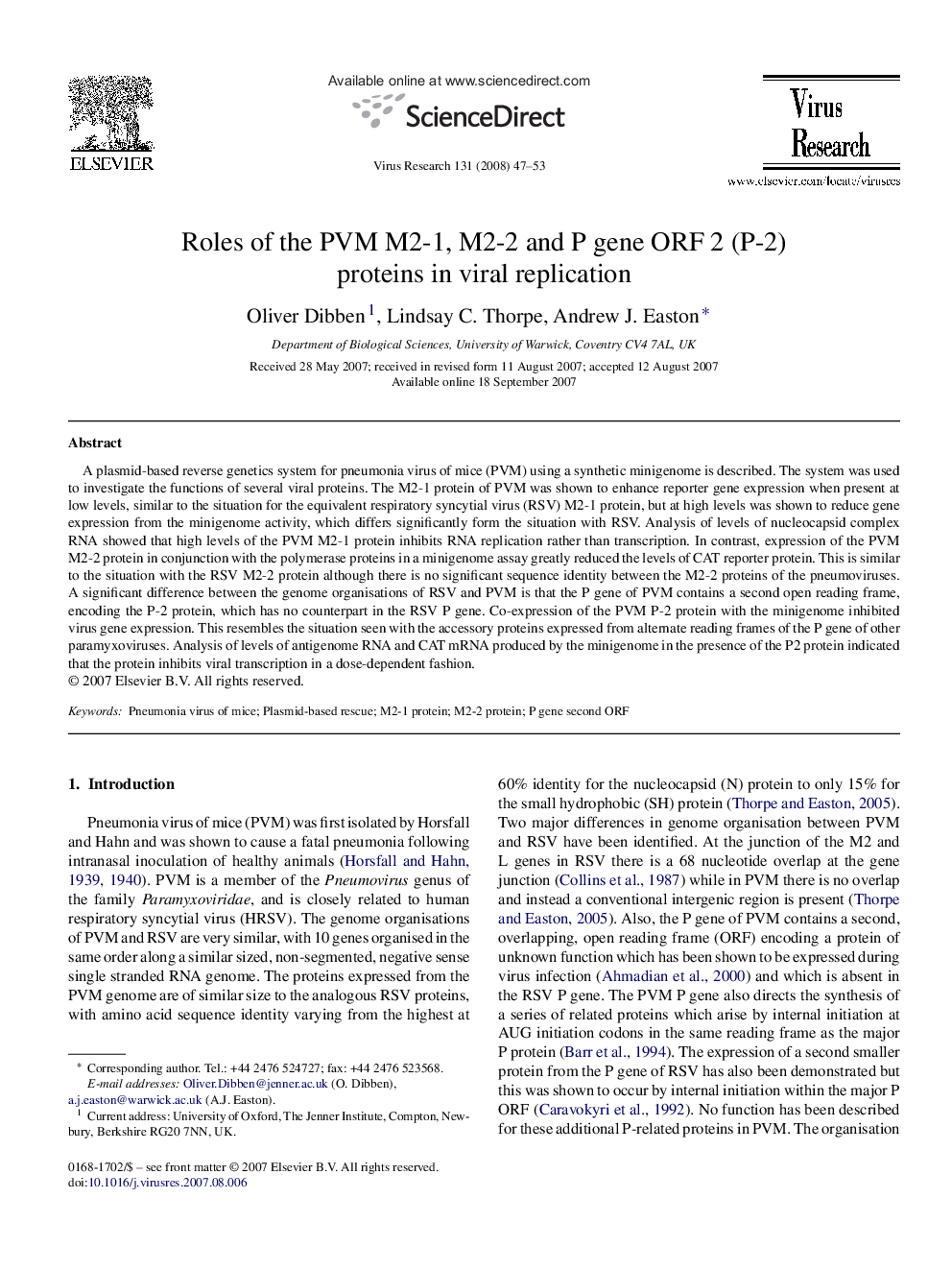| Article ID | Journal | Published Year | Pages | File Type |
|---|---|---|---|---|
| 6143620 | Virus Research | 2008 | 7 Pages |
Abstract
A plasmid-based reverse genetics system for pneumonia virus of mice (PVM) using a synthetic minigenome is described. The system was used to investigate the functions of several viral proteins. The M2-1 protein of PVM was shown to enhance reporter gene expression when present at low levels, similar to the situation for the equivalent respiratory syncytial virus (RSV) M2-1 protein, but at high levels was shown to reduce gene expression from the minigenome activity, which differs significantly form the situation with RSV. Analysis of levels of nucleocapsid complex RNA showed that high levels of the PVM M2-1 protein inhibits RNA replication rather than transcription. In contrast, expression of the PVM M2-2 protein in conjunction with the polymerase proteins in a minigenome assay greatly reduced the levels of CAT reporter protein. This is similar to the situation with the RSV M2-2 protein although there is no significant sequence identity between the M2-2 proteins of the pneumoviruses. A significant difference between the genome organisations of RSV and PVM is that the P gene of PVM contains a second open reading frame, encoding the P-2 protein, which has no counterpart in the RSV P gene. Co-expression of the PVM P-2 protein with the minigenome inhibited virus gene expression. This resembles the situation seen with the accessory proteins expressed from alternate reading frames of the P gene of other paramyxoviruses. Analysis of levels of antigenome RNA and CAT mRNA produced by the minigenome in the presence of the P2 protein indicated that the protein inhibits viral transcription in a dose-dependent fashion.
Keywords
Related Topics
Life Sciences
Immunology and Microbiology
Virology
Authors
Oliver Dibben, Lindsay C. Thorpe, Andrew J. Easton,
